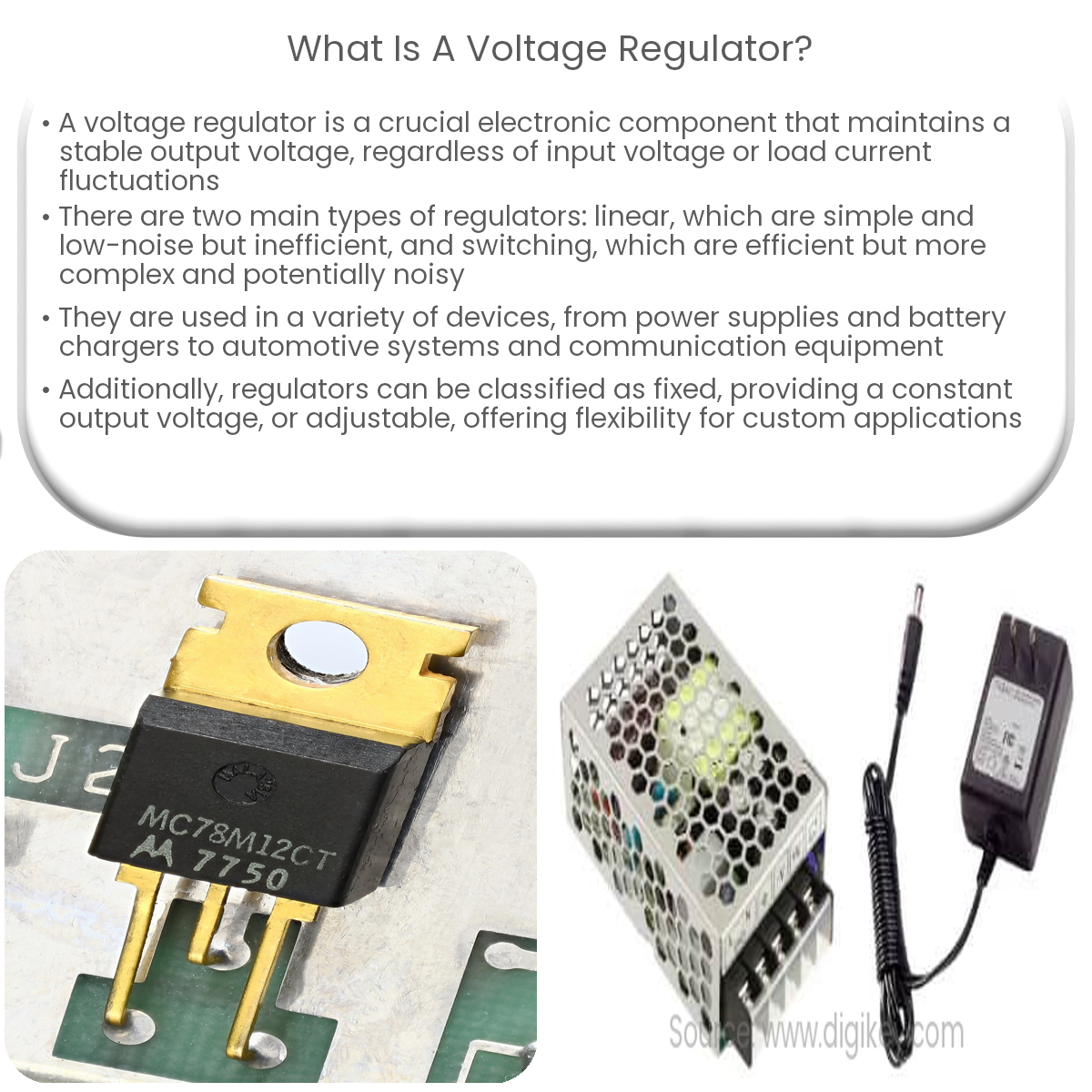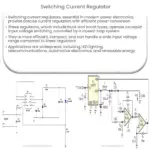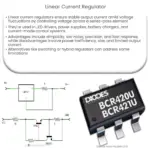A voltage regulator is an electronic component that maintains a consistent output voltage, protecting devices from voltage fluctuations and ensuring stability.
What is a Voltage Regulator?
A voltage regulator is an electronic component or circuit that maintains a consistent output voltage, despite variations in input voltage or load current. It plays a crucial role in ensuring that electronic devices receive a stable supply of voltage, preventing potential damage caused by voltage fluctuations.
Types of Voltage Regulators
There are two main types of voltage regulators: linear and switching regulators.
Linear Voltage Regulators
Linear voltage regulators operate by adjusting the resistance between the input and output terminals to regulate the output voltage. They are known for their simplicity, low noise, and excellent voltage regulation. However, they tend to be inefficient as they dissipate excess power as heat, which might require additional heat sinking.
Switching Voltage Regulators
Switching voltage regulators, on the other hand, use high-frequency switching elements such as transistors to control the output voltage. They are more efficient than linear regulators because they can either step-up (boost) or step-down (buck) the input voltage. This efficiency comes at the cost of increased complexity and potential noise generation due to the high-frequency switching.
Applications of Voltage Regulators
Voltage regulators find applications in a wide range of electronic devices, such as:
- Power supplies: ensuring a stable output voltage for various electronic devices.
- Battery chargers: maintaining a constant charging voltage for batteries.
- Automotive systems: stabilizing voltage in vehicle electrical systems.
- Communication equipment: providing a stable supply for sensitive radio frequency (RF) and digital circuits.
Fixed and Adjustable Voltage Regulators
There are two primary classifications of voltage regulators based on their output voltage:
- Fixed voltage regulators: These regulators provide a constant output voltage and are available in standard voltage levels, such as 5V, 9V, or 12V.
- Adjustable voltage regulators: These regulators allow the user to set the desired output voltage by adjusting external components, typically resistors. They offer greater flexibility for custom applications.
In conclusion, voltage regulators are essential components in modern electronics, providing a stable voltage supply to ensure the reliable operation of various devices. They come in different types and configurations, each with its advantages and drawbacks, making them suitable for a wide array of applications.





